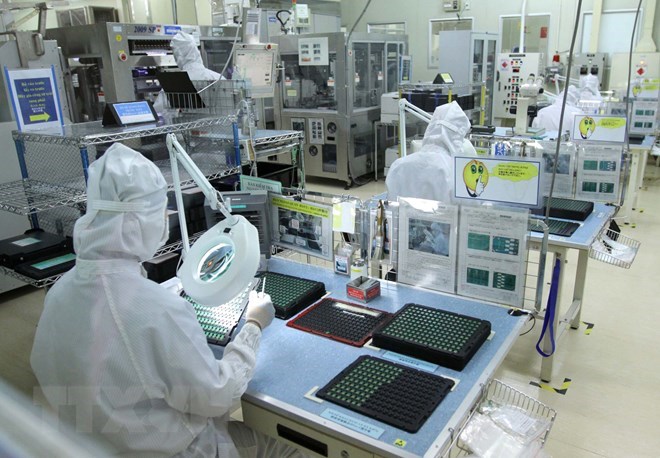
Illustrative image (Source: VNA)
The increase was attributed to the country’s more open investment environment as investors who want to contribute capital or buy shares do not have to register for investment licences like those conducting foreign direct investment (FDI) projects.
Therefore, “many investors choose this type of investment, since they do not waste time to carry out investment procedures and quickly gain access to the Vietnamese market,” said Nguyen Mai, head of the Vietnam Association of Foreign Invested Enterprises.
On the other hand, during the period, decreases were seen in newly-registered capital and additional capital poured into existing projects, at 27.3 percent and 54.6 percent, respectively.
In total, Vietnam attracted 5.8 billion USD in foreign investment during January-March, down 25 percent year-on-year.
The Foreign Investment Agency under the Ministry of Planning and Investment (MoPI) reported that processing and manufacturing remained the most attractive sector to foreign investors, receiving 3.44 billion USD and accounting for 59.4 percent of the total commitments.
The retail and wholesale sectors received the second largest chunk of FDI with 531 million USD or 9.2 percent, followed by the real estate sector with 486 million USD or 8.4 percent.
The Republic of Korea remained the biggest foreign investor among 76 countries and territories investing in Vietnam in the first quarter of 2018, with total registered capital of 1.84 billion USD, 31.6 percent of the total capital.
Businesses from Hong Kong registered to pour 689 million into Vietnam, making up 11.9 percent of the country’s total FDI, while those from Singapore injected 649 million USD, 11.2 percent of total FDI.
The southern economic hub of Ho Chi Minh City continued to be the largest recipient of FDI during the period with 1.7 billion USD, while the northern port city of Hai Phong received 925 million USD to take second place.
The third largest destination of FDI was the southern province of Binh Duong with investment worth 565 million USD.
To fully capitalise on the FDI capital, the MoPI is drafting a FDI strategy for 2018-2023. With assistance from the World Bank, the FDI strategy underlines that Vietnam should focus on sectors having advantages and those that foreign firms could bring more benefits to rather than domestic firms.
The draft strategy stipulates Vietnam define priority sectors for attracting FDI, such as those that need increased value and competitiveness, including manufacturing, services, agriculture and travel./.
VNA
 Central bank mulls raising gold position limit for lenders
Central bank mulls raising gold position limit for lenders



